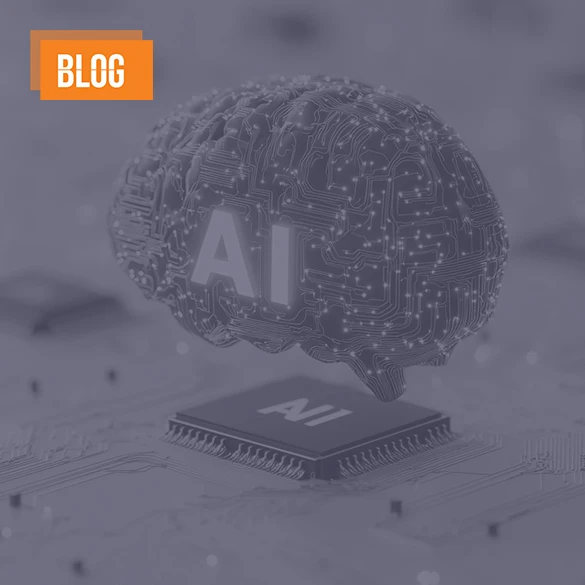From AI to Customer Satisfaction in 5 ways


Artificial Intelligence (AI) is not only going to profoundly change that way in which service providers operate their networks and do business, but it is also going to dramatically change the way they interact with their customers. In fact, using AI to enhance interactions with customers is the single most popular application today. According to Gartner Research, more than 85% of all customer interactions will be digital and managed without a human by 2020.
Service Providers are currently in the midst of their digital transformation programs to make them fit for the new digital “everything that can be connected, will be connected” world. This of course puts a lot of pressure on the network as CSPs are handling more data than ever and are offering new complex digital services. In order to be successful, CSPs must embrace AI not only for OpEx savings through network automation and service orchestration but they also need to deploy AI to remain competitive and have a differentiated, personalized customer experience. By embracing AI for customer experience, service providers can also rationalise revenue and reduce churn. AI is a game changer that will move operators away from a price war to a war based on delivering a ubiquitous personalised customer experience.
Operators are still in the early stages of AI deployment but there are some quick wins to be had. The top five ways service providers can improve customer experience by deploying AI today are:
1.Chatbots - we have already seen chatbots successfully deployed across a number of industries and markets in addition to the telecom sector. The benefits and ROI of chatbots can easily be measured, i.e. fewer customer calls to the call centre which not only means staffing levels can be reduced and cost savings made, but it also results in a better customer experience as customers can get answers quicker, and not be kept waiting in a call queue. Chatbots should be carefully deployed as humans are ultimately sentient beings and often need and like human interaction. Cha bots should be used for simple enquiries such as “how much data do I have left on my plan, or what is my current bill?” For more complex queries, the chat bot should hand over to a human agent so that the customer care agent can deal with their customers 1:1 which will also give them the opportunity to up or cross-sell. Telekom Malaysia have successfully recently launched their chat bot for billing enquiries whilst Telstra has an approach which has seen them but basic information into a chatbot but then hand over to staff for higher-value interactions.
2.Voice recognition/assistants – several service providers have successfully made the transition from offering text based chatbots to more complex voice recognition assistance for example using voice recognition for payment taking or security checking. In addition a number of service providers have launched voice assistants following in the steps of Google’s Alexa and Amazon’s Echo. Orange has launched its digital assistant Djingo, whilst Telefonica launched Aura.
3.Real-time offers & upsells - AI has a great potential for increasing both customer satisfaction and increasing revenue. One of operator’s greatest assets is its data. AI can provide insights into each individual customer’s experience and usage. A good example could be somebody who travels a lot for business but still uses their personal devises to make calls/receive e-mails etc. The AI engine could offer that customer a limited time roaming bundling deal or change the customers plan to one which suited them better. The same could be applied for data bundles or gaming packages. Vodafone launched TOBi in July 2017 to help with the purchase of SIM only plans.
4.Eliminate customer churn – AI is a very powerful tool to reduce and eliminate customer churn. As stated in the introduction to the blog, price wars will be a thing of the past as the new battle ground will be delivering a superior customer experience. AI can be used for personalising every part of the customer relationship, from pre-sales to onboarding to queries and new services. AI could also be used as a way to co-create new services with customers, to give a deeper level of personalisation so that customer stickiness increases as the consumer wouldn’t be able to get the co-created service anywhere else.
5.Network anomaly detection - a key win for service providers is to use AI for network anomaly detection and maintenance. If there is a fault on the network which causes a network outage or the loss of some services i.e. internet or SMS etc, service providers can automatically notify and inform their customers of the situation and when services are likely to be restored, providing real-time information and updates. This will reduce customer frustration as well as lengthy call centre queues. Consumers would much rather be informed that there is a fault with the network which you know about and are addressing, as well as when the issue will be resolved. This type of customer interaction will help create a personised relationship with the customer and thus improve the customer experience and help reduce churn.
AI is here now, and it is ready to be deployed. Service providers need to quickly embrace this very powerful technology as it will not only reduce costs and make the deployment of new complex services much quicker and easier, but it will fundamentally be a game changer. It will allow operators to provide a unique personalised experience and focus less on price and more on the quality of experience. AI is a gamechanger for the service provider and the customer.








